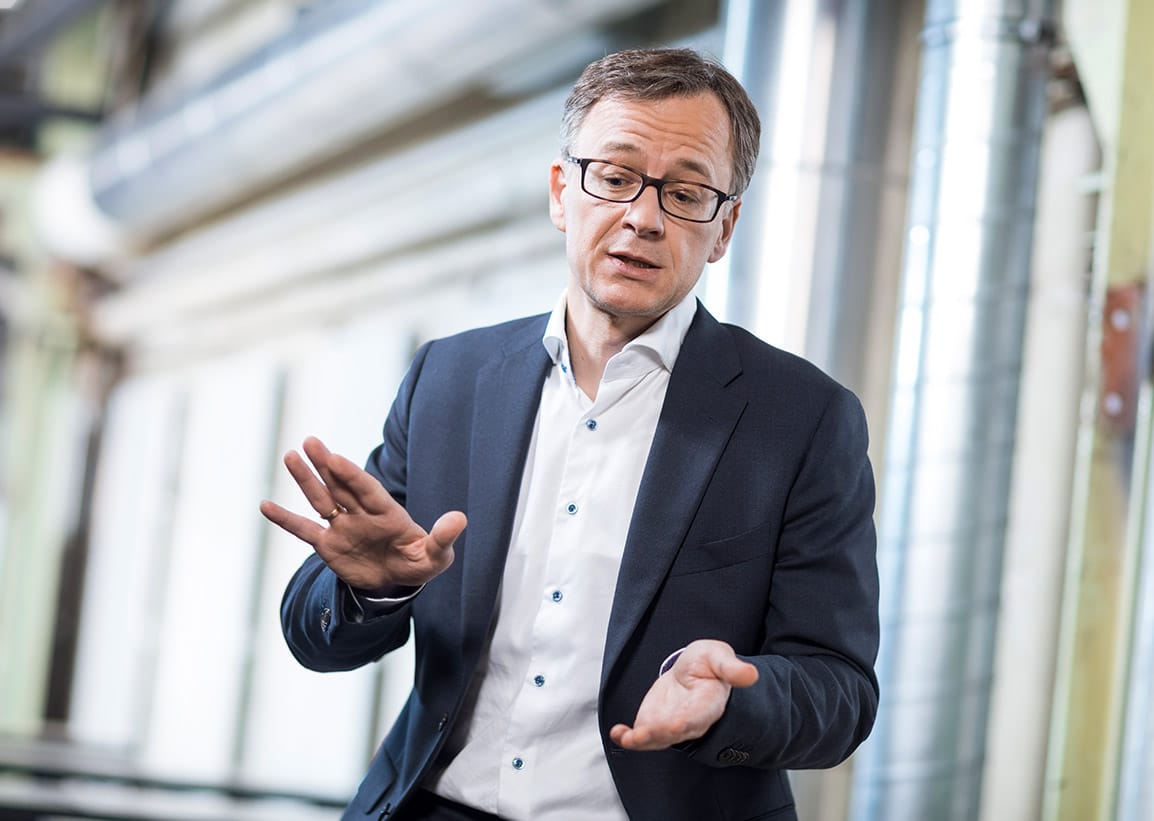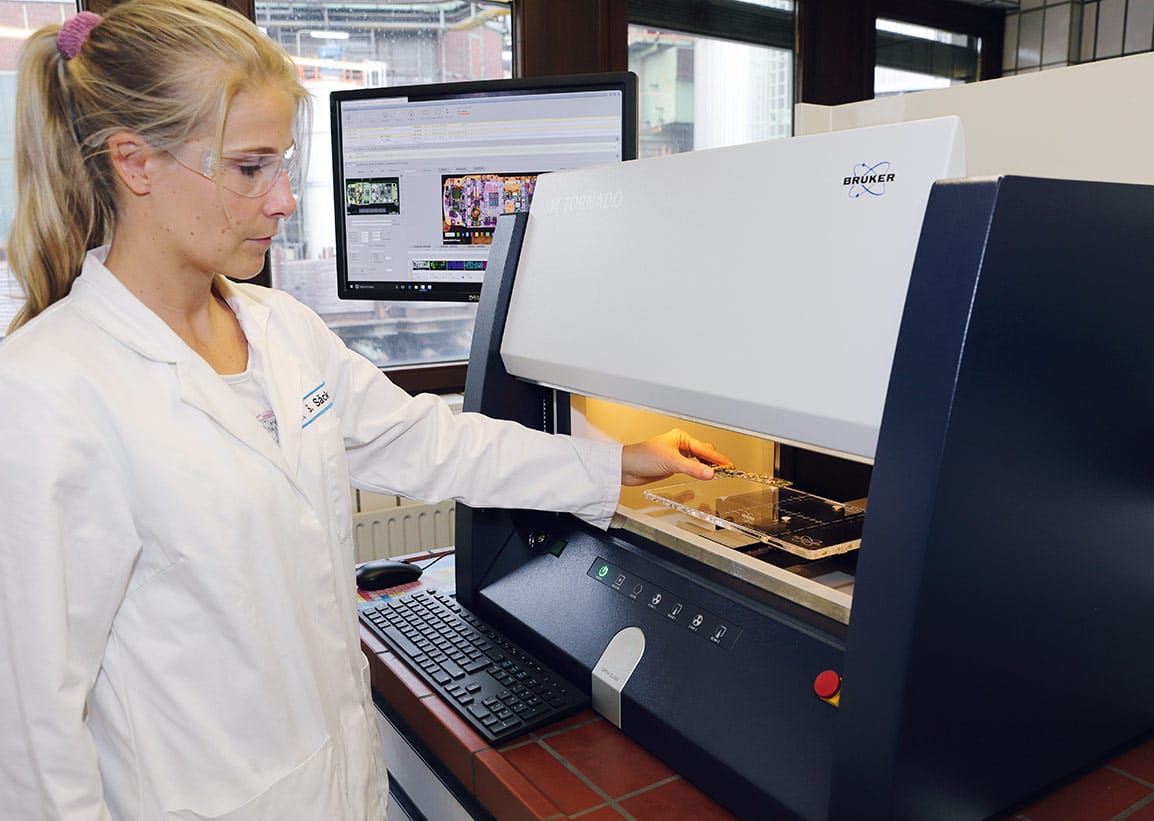Research and Development
in the Digital Age
Understanding complexity
Our environment is becoming more complex, not least with regard to raw materials, material streams, and electricity demand. In these circumstances, keeping sight of the big picture is an achievement in itself. But only those also able to harness the corresponding developments will be able to create new opportunities from them. Dr. Mario Löbbus is committed to creating order. In addition to material and product research, he forges new paths with his team to bring a semblance of control to this complexity.

On the lookout for the optimum
Managing one or two smelters might be a straightforward endeavor, but Aurubis has grown in the past few decades to encompass four smelters in different regions of Europe. Aurubis has two primary copper smelters that primarily process concentrates and two secondary copper smelters specialized in processing different recycling materials. They all come with unique challenges. “Our plant network has grown into an interlinked structure,” Mario Löbbus points out. “We have to learn how to handle this complexity.”
Aurubis pursues several goals at once when it comes to managing its facilities, including shaping the material flow to maximize capacity utilization. This means recovering as much copper and other metals as possible with the existing equipment, among other things. Furthermore, the company is working on improving its ability to process the rising volume of complex raw materials. Our objective is to generate the greatest possible value from the input materials while also optimizing inventory management and improving operating capital. Mario Löbbus sums it up as follows: “In the end, all of our activities aim to draw the optimum out of our existing smelter network.”
A model that can be used again and again
In many manufacturing industries, homogenous input materials are turned into finished products comprising multiple individual elements. In copper production, however, things are the other way around, with the input materials (copper concentrate or recycling materials) comprising numerous elements and the final product, only one: high-purity copper. And with Aurubis’ multi-metal approach, the variety of input materials will increase in the future.
In its recycling activities, the company took the first step to deciphering the complexity of its raw materials many years ago. Aurubis has thus developed a leading position in recycling in the past several years. Today, the company continues to develop its capabilities with respect to the recycling materials of the future. The idea has always been to better understand the different components in the recycling materials, whether copper scrap, electronic scrap, or metal-bearing industrial slag.
The experience gathered from the value-oriented, holistic approach that has been established in the meantime will continue to gain importance with the growth project FCM.

“We are working on a fully digital value chain that spansraw material purchasing, product delivery, strategic planning, and daily implementation.”
A pioneering role in the metal industry
As with recycling, Aurubis starts its planning process involving copper concentrates before the raw materials are even purchased. The company incorporates modeling and advanced analytics technologies into planning models. Supply chain models can support decisions along the entire value chain: from the raw material to the cathode to the product. Similar systems are already being used successfully in the chemical industry. In copper production, however, Aurubis assumes a pioneering role with its developments.
Mathematical methods can help derive recommendations for production based on the composition of the different raw materials, technical restrictions, commercial conditions, and current market circumstances. Aurubis therefore enhances the value drawn from a number of different concentrates.
This works because the company, as a custom smelter, has the option of varying its input mix. “We mix concentrates with specific compositions from different mines and adjust them to the demands of our production process,” Mario Löbbus says. “This allows us to produce a larger volume of in-demand metals at a specific time. In doing so, the diversity of our smelters in the Group network is a huge advantage for us.”
Data mining in smelters
To further optimize the input mix and facility management, Mario Löbbus and his team want to make process monitoring and the company’s collected data easier to use than before. To that end, more and more sensors are being installed in and on the equipment to take continuous measurements. This, together with the observations and recordings of production employees and information from the Supply Chain Management division, leads to an extensive data pool. Computer algorithms assist in looking for patterns in this data that help us understand the metallurgical processes better, which contributes to the development of new processes and technologies, such as our FCM project.
Aurubis hopes to derive possible optimization potential and guidance for making decisions from this data and to use it for both strategic planning and operative purposes. “Models and artificial intelligence are limited by the quantity and quality of the data given to help them learn,” according to Mario Löbbus. “Data isn’t always knowledge. This benefit transfer always requires the interplay between data analysts and metallurgists, technicians, or financial experts.”

Intelligent energy distribution
An initial project in energy management at the Hamburg site illustrates how this approach can provide concrete benefits in practice. Artificial intelligence is supposed to improve predictions about when Aurubis and its various production facilities draw a particularly high or low amount of energy from the public energy grid. In the future, preemptive interventions should help prevent peak loads in production scheduling. With active management and planning, the company would also like to reduce the impacts of such interventions on its own production. The next step is for the model to react to energy price fluctuations that come at short notice.
Predictive maintenance
Apart from the optimizations already described, one of the highest priorities of a company like Aurubis that relies heavily on its equipment is to avoid production disruptions. The department under Mario Löbbus is researching this area as well, which goes by the term predictive maintenance. For a smelter, an unscheduled disruption in the smelting process generally leads to metal losses. Valuable components such as precious metals remain in the slag and can’t be recovered in any meaningful way. “A scheduled facility shutdown is therefore always better than an unscheduled one,” explained Mario Löbbus. “The earlier we identify a weak spot, the more options we have to take action.” What sounds futuristic today could be reality in just a few years.
“Predictive maintenance is an exciting approach,” Mario Löbbus says. “However, it is just as important that we continue working on maximizing metal recovery and the availability of the facilities. When it comes to metal, we have to be the best.”
